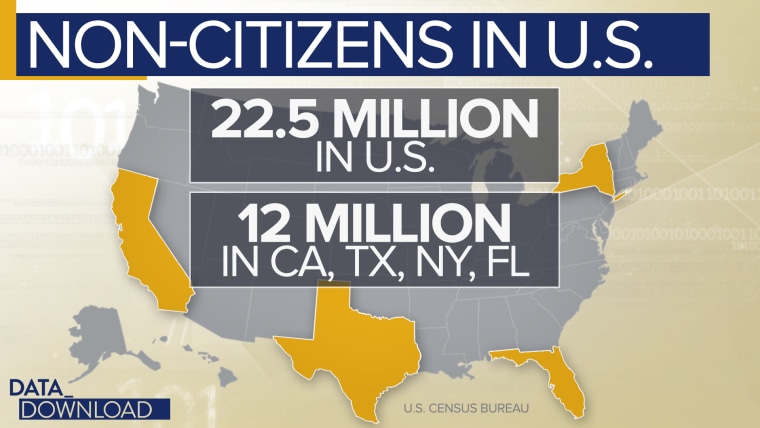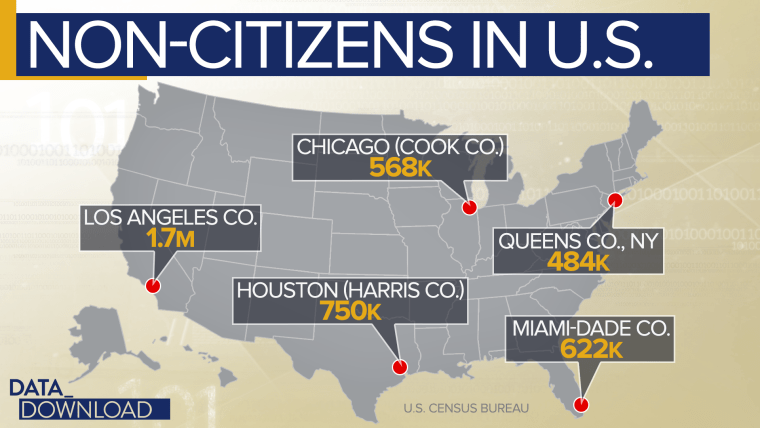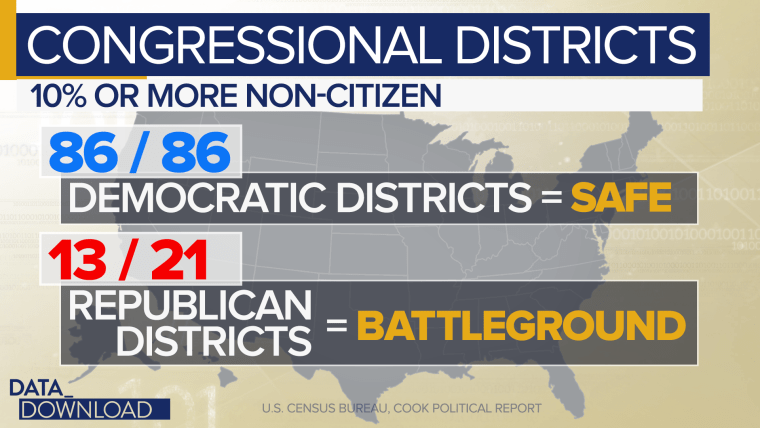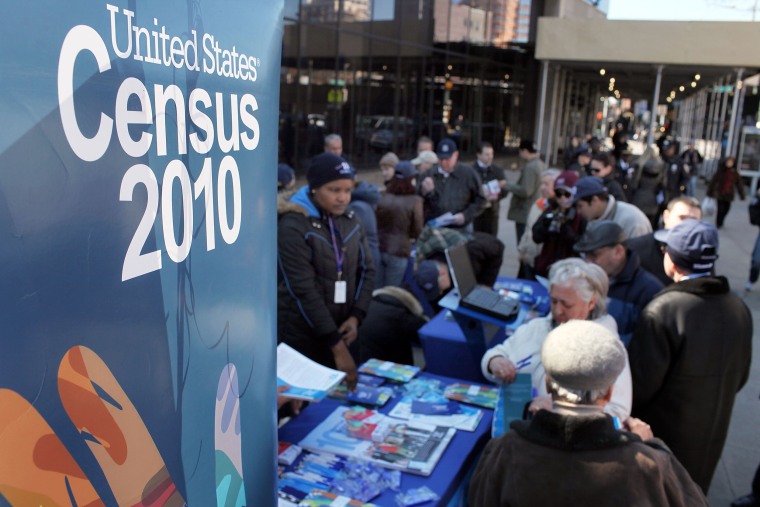WASHINGTON — This week, the U.S. Census suddenly became a hot political topic in Washington – yes, you read that right, the U.S. Census. And now a partisan fight is brewing over the bureau’s crucial 2020 survey.
It began on Tuesday when the Trump administration proposed a last-minute additional question to the 2020 Census regarding citizenship. Democrats quickly cried foul and some states threatened to sue, arguing that the question would intimidate noncitizens and Hispanics and cause inaccurate tallies.
Of course, partisan rancor isn’t new in Washington, but even by 2018 standards the Census fight is strange.
First, the Census already asks about citizenship – “Is this person a citizen of the United States?” – every year on a lengthy questionnaire called the American Community Survey that goes to 3.5 million homes. And second, the data from that survey give us a pretty good sense of what the noncitizen population of the United States looks like.
According to Census ACS data, there were 22.5 million noncitizens in the United States in 2016. That’s about 7 percent of the total 323 million U.S. residents. We also know the states with the largest noncitizen population: California, Texas, New York and Florida.

Those four states hold more than 12.2 million noncitizens or about 54 percent of the total noncitizen population.
And one can go much further with the Census data. At the county level, Los Angeles far and away has the largest noncitizen tally. There are about 1.7 million noncitizens in the city, about 17 percent of the county’s total population.

Next after Los Angeles are other large urban centers, Harris County Texas (Houston), Miami-Dade County Florida, and Cook County Illinois, (Chicago). In all those counties more than 500,000 residents are not U.S. citizens.
And counties aren’t the end. You can use the Census ACS data to go all the way to the equivalent of zip codes.
With all of that known, why the sudden interest in asking about citizenship in 2020? And why has the topic become so hot in D.C.?
The Trump administration argues that the citizenship question needs to be included on the 2020 Census to give the Justice Department better information on where citizens live so it can better enforce the Voting Rights Act. The decennial census gathers data down to the tract level, usually home to about 2,500 to 8,000 people.
But Democrats, and many experts, smell a political move. They argue that the current data is enough. Including the citizenship question on 2020 Census may lead noncitizens and Hispanics to not send in their forms to be counted. The charged atmosphere around immigration under the Trump administration may be a strong dissuader.
The stakes are high.
The 2020 count will be an important part of how $690 billion federal dollars from 132 programs will be distributed, so there could be financial impacts at the state and local level. Fewer people, often means fewer dollars. And if you look at the counties above, and the urban areas connected with them, you’ll notice they are heavily Democratic.
Furthermore, the 2020 survey also will be the population basis for the next congressional redistricting – that gives both parties an abiding interest in the numbers.
Congressional districts are drawn using residents as the measure, not citizens. And the way immigrant populations tend to cluster in diverse, urban places means noncitizen populations often help Democrats. Consider the current data.
There are 107 congressional districts where 10 percent or more of the population is made up of noncitizens, according to the Census – 86 of them are represented by Democrats and 21 represented by Republicans.

And there are some clear patterns in the numbers.
Not a single one of the 86 Democratic districts is a political battleground in 2018, according to the Cook Political Report. Those seats, such as New York 14 in the Bronx and Queens, California 17 in the Bay Area and Illinois 4 around Chicago, are mostly very urban areas with large minority populations. There are many noncitizens who cannot vote in those places, but the citizens who can vote lean heavily Democratic. The phenomenon makes it easier to draw solidly Democratic districts.
On the Republican side, 13 of the 21 high noncitizen districts are battlegrounds, according to Cook. Districts such as Florida 26, California 10 and Texas 7 are listed as tossups. They are tossups because large noncitizen populations are included in the boundary near large minority populations. That makes it harder for Republicans to draw district lines that bring in more Republican-leaning voters.
Does all of that suggest a partisan impact if the citizenship question is added to the 2020 Census? Yes. How big? That’s far from clear.
The citizenship question has not been tested as a part of the decennial Census, so it’s hard to know the impact it will actually have on return rates. And remember, the tallies are only a small part of redistricting. The act of actually drawing the lines on the maps is a far bigger factor and that practice is the control of different entities in different states.
But the Census changes could be enough to add or subtract a few competitive seats here or there. In an era when the American political scene is so closely divided that can be enough to make a difference. It’s certainly enough to get Washington’s attention.
